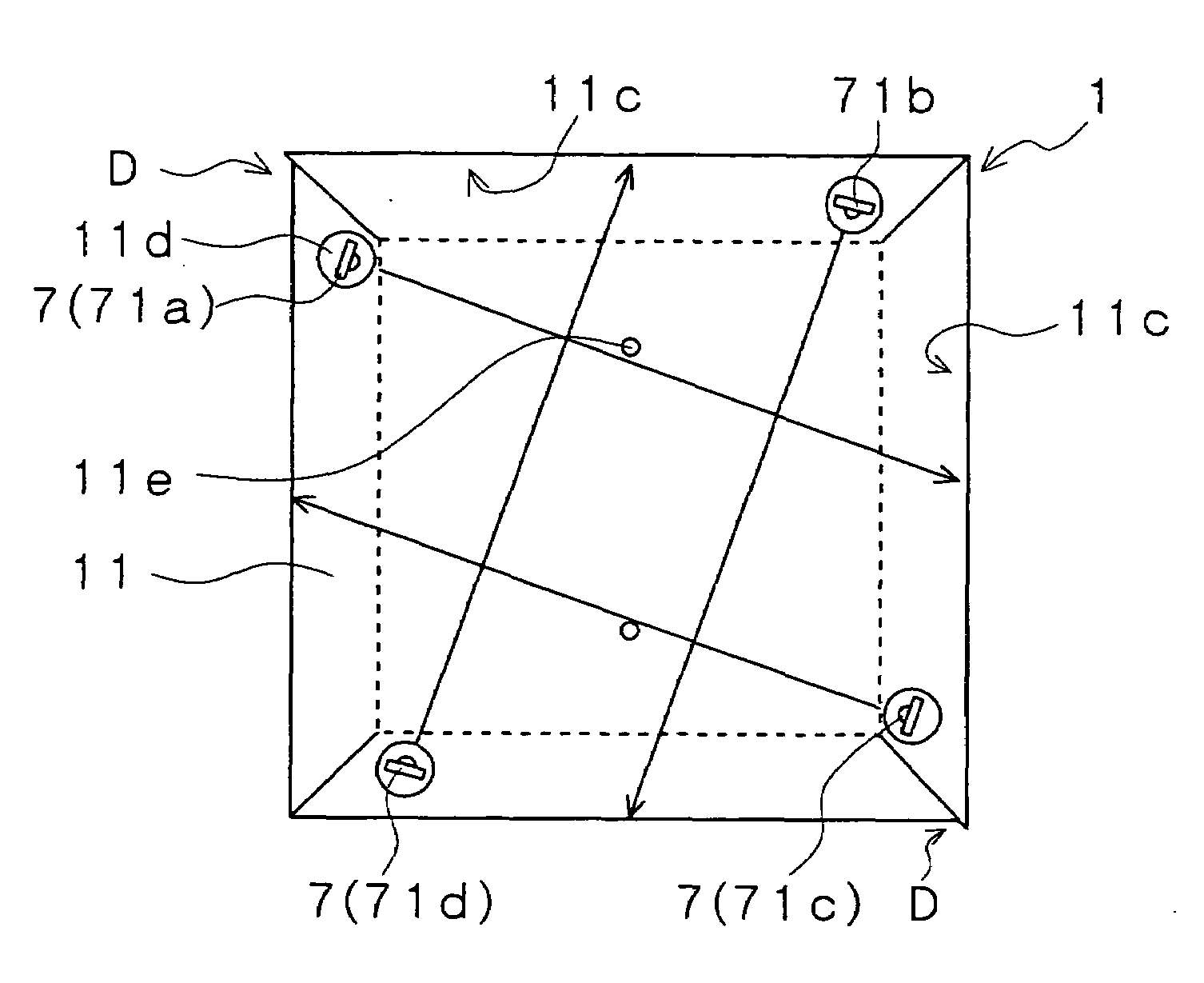Surface light source and electrically illuminated signboard
a technology of electrical illumination and light source, which is applied in the direction of lighting and heating apparatus, instruments, display means, etc., can solve the problems of inability to achieve perfect uniformity in a surface, inability to obtain light source of a large type, and enlarging of television receivers or the like, so as to improve color rendering properties, uniform brightness, and thin backlight
- Summary
- Abstract
- Description
- Claims
- Application Information
AI Technical Summary
Benefits of technology
Problems solved by technology
Method used
Image
Examples
Embodiment Construction
[0043]An explanation will be given below of a surface light source according to the present invention and an electrically illuminated signboard using the same in reference to the drawings. As there are shown in FIGS. 1A to 1D, figures explaining a plan view and a side view of an embodiment of the surface light source unit according to the present invention, a cross-sectional view of the box body and a side view of a light emitting device, the surface light source unit according to the present invention is provided with LEDs 7 of a chip type provided on at least opposite two corners of the bottom surface of the box body 11 of a tray shape so as to irradiate inside of the box body, whose bottom surface is quadrilateral, whose upper side is open, on an inner surface of which a light diffused-reflection member 11b is provided, and whose side walls 11c are inclined outward. Here, a plurality of LEDs 7 (71) are arranged so that a region irradiated by each of the LEDs 7 (71) rotates in a c...
PUM
 Login to View More
Login to View More Abstract
Description
Claims
Application Information
 Login to View More
Login to View More - R&D
- Intellectual Property
- Life Sciences
- Materials
- Tech Scout
- Unparalleled Data Quality
- Higher Quality Content
- 60% Fewer Hallucinations
Browse by: Latest US Patents, China's latest patents, Technical Efficacy Thesaurus, Application Domain, Technology Topic, Popular Technical Reports.
© 2025 PatSnap. All rights reserved.Legal|Privacy policy|Modern Slavery Act Transparency Statement|Sitemap|About US| Contact US: help@patsnap.com



